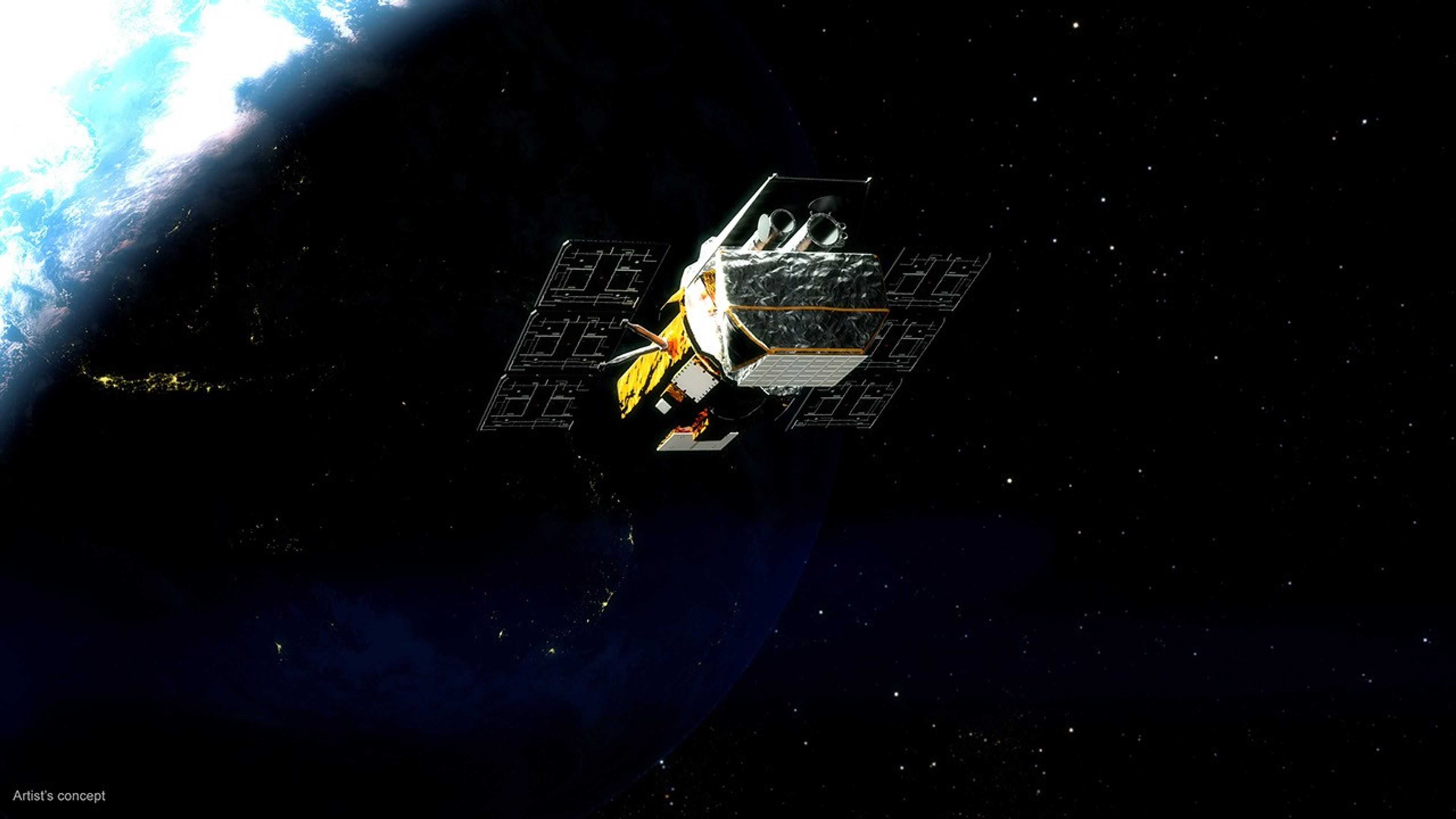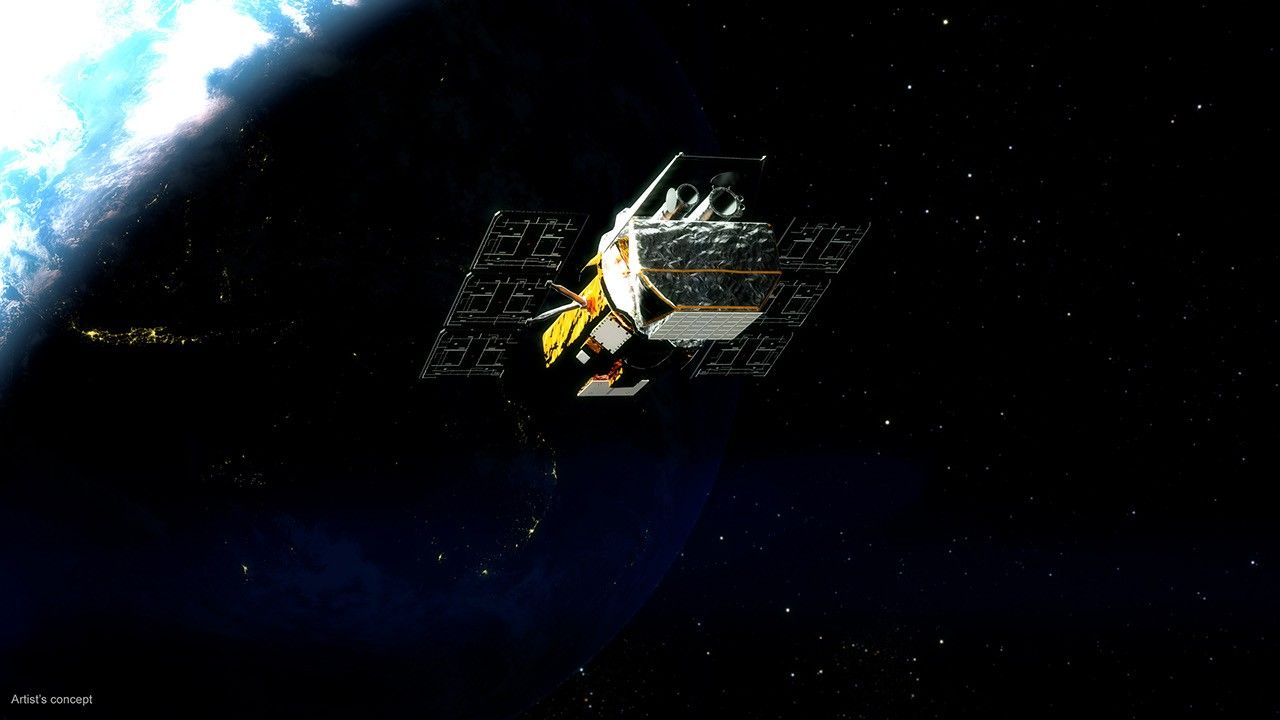5 min read
NASA’s Swift Reaches 20th Anniversary in Improved Pointing Mode After two decades in space, NASA’s Neil Gehrels Swift Observatory is performing better than ever thanks to a new operational strategy implemented earlier this year. The spacecraft has made great scientific strides in the years since scientists dreamed up a new way to explore gamma-ray bursts, the most powerful explosions in the universe.
“The idea for Swift was born during a meeting in a hotel basement in Estes Park, Colorado, in the middle of a conference,” said John Nousek, the Swift mission director at Pennsylvania State University in State College. “A bunch of astrophysicists got together to brainstorm a mission that could help us solve the problem of gamma-ray bursts, which were a very big mystery at the time.”
Watch to learn how NASA’s Neil Gehrels Swift Observatory got its name.
NASA’s Goddard Space Flight Center Gamma-ray bursts occur all over the sky without warning, with about one a day detected on average. Astronomers generally divide these bursts into two categories. Long bursts produce an initial pulse of gamma rays for two seconds or more and occur when the cores of massive stars collapse to form black holes. Short bursts last less than two seconds and are caused by the mergers of dense objects like neutron stars.
But in 1997, at the time of that basement meeting, the science community disagreed over the origin models for these events. Astronomers needed a satellite that could move quickly to locate them and move to point additional instruments at their positions.
What developed was Swift, which launched Nov. 20, 2004, from Complex 17A at what is now Cape Canaveral Space Force Station in Florida. Originally called the Swift Observatory for its ability to quickly point at cosmic events, the mission team renamed the spacecraft in 2018 after its first principal investigator Neil Gehrels.
Swift uses several methods for orienting and stabilizing itself in space to study gamma-ray bursts.
Sensors that detect the Sun’s location and the direction of Earth’s magnetic field provide the spacecraft with a general sense of its location. Then, a device called a star tracker looks at stars and tells the spacecraft how to maneuver to keep the observatory precisely pointed at the same position during long observations.
Swift uses three spinning gyroscopes, or gyros, to carry out those moves along three axes. The gyros were designed to align at right angles to each other, but once in orbit the mission team discovered they were slightly misaligned. The flight operations team developed a strategy where one of the gyros worked to correct the misalignment while the other two pointed Swift to achieve its science goals.
The team wanted to be ready in case one of the gyros failed, however, so in 2009 they developed a plan to operate Swift using just two.
 Swift orbits above Earth in this artist’s concept.NASA’s Goddard Space Flight Center Conceptual Image Lab Any change to the way a telescope operates once in space carries risk, however. Since Swift was working well, the team sat on their plan for 15 years.
Swift orbits above Earth in this artist’s concept.NASA’s Goddard Space Flight Center Conceptual Image Lab Any change to the way a telescope operates once in space carries risk, however. Since Swift was working well, the team sat on their plan for 15 years.
Then, in July 2023, one of Swift’s gyros began working improperly. Because the telescope couldn’t hold its pointing position accurately, observations got progressively blurrier until the gyro failed entirely in March 2024.
“Because we already had the shift to two gyros planned out, we were able to quickly and thoroughly test the procedure here on the ground before implementing it on the spacecraft,” said Mark Hilliard, Swift’s flight operations team lead at Omitron, Inc. and Penn State. “Actually, scientists have commented that the accuracy of Swift’s pointing is now better than it was since launch, which is really encouraging.”
For the last 20 years, Swift has contributed to groundbreaking results — not only for gamma-ray bursts but also for black holes, stars, comets, and other cosmic objects.
“After all this time, Swift remains a crucial part of NASA’s fleet,” said S. Bradley Cenko, Swift’s principal investigator at NASA’s Goddard Space Flight Center in Greenbelt, Maryland. “The satellite’s abilities have helped pioneer a new era of astrophysics called multimessenger astronomy, which is giving us a more well-rounded view of how the universe works. We’re looking forward to all Swift has left to teach us.”
Swift is a key part of NASA’s strategy to look for fleeting and unpredictable changes in the sky with a variety of telescopes that use different methods of studying the cosmos.
Goddard manages the Swift mission in collaboration with Penn State, the Los Alamos National Laboratory in New Mexico, and Northrop Grumman Space Systems in Dulles, Virginia. Other partners include the University of Leicester and Mullard Space Science Laboratory in the United Kingdom, Brera Observatory in Italy, and the Italian Space Agency.
Download high-resolution images on NASA’s Scientific Visualization Studio By Jeanette Kazmierczak
NASA’s Goddard Space Flight Center, Greenbelt, Md.
Media Contact:
Claire Andreoli
301-286-1940
claire.andreoli@nasa.gov
NASA’s Goddard Space Flight Center, Greenbelt, Md.
Facebook logo @NASAUniverse @NASAUniverse Instagram logo @NASAUniverse


